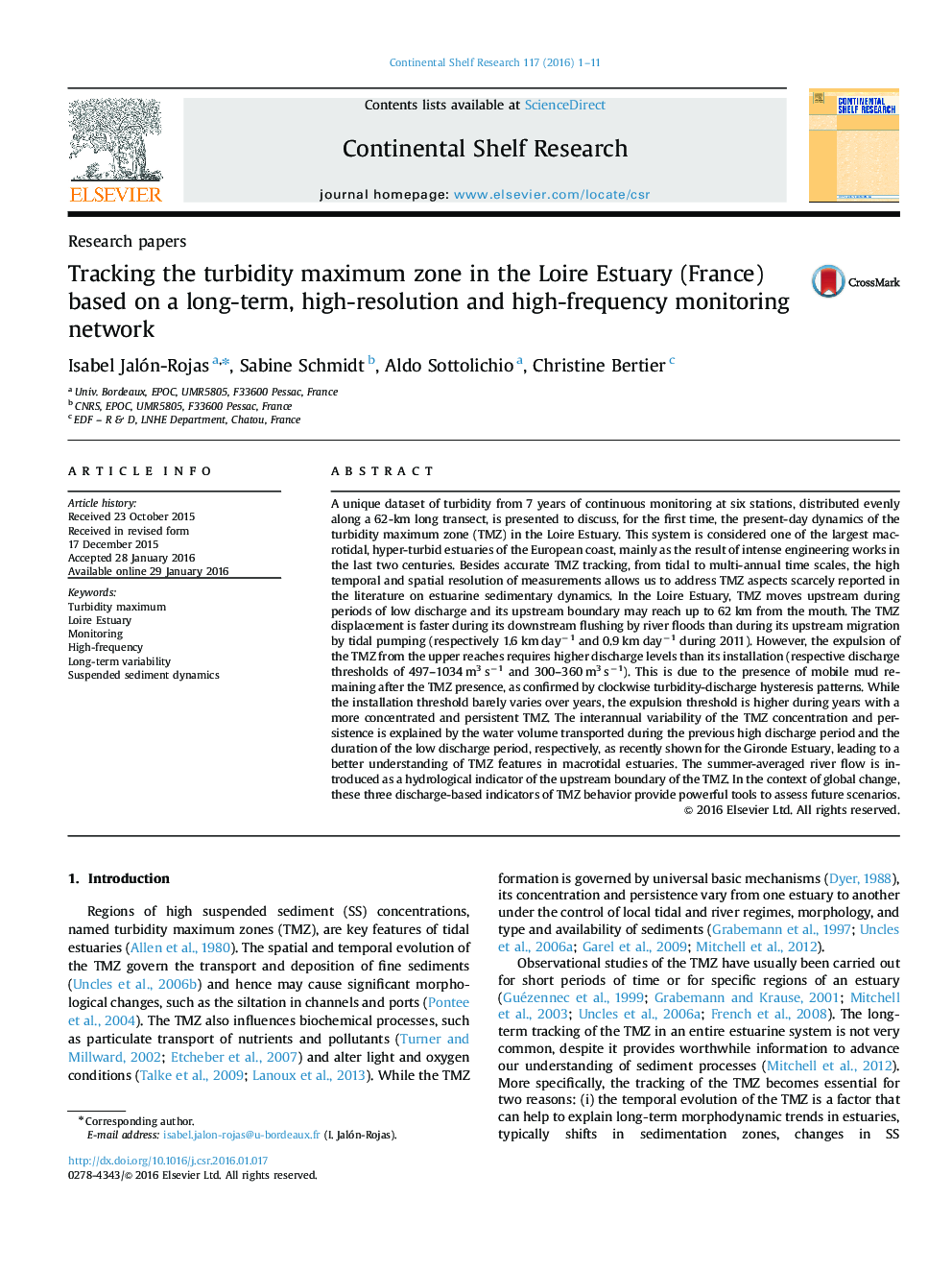| کد مقاله | کد نشریه | سال انتشار | مقاله انگلیسی | نسخه تمام متن |
|---|---|---|---|---|
| 6382939 | 1626096 | 2016 | 11 صفحه PDF | دانلود رایگان |

- Original set of 7-years of high-frequency records of turbidity in the Loire Estuary.
- TMZ dynamics in the Loire Estuary are investigated for the first time.
- Interannual variability of TMZ (persistence, concentration, position) is detailed.
- TMZ shifts are analyzed in terms of concentration, velocities and water thresholds.
- New hydrological indicators of TMZ features are defined.
A unique dataset of turbidity from 7 years of continuous monitoring at six stations, distributed evenly along a 62-km long transect, is presented to discuss, for the first time, the present-day dynamics of the turbidity maximum zone (TMZ) in the Loire Estuary. This system is considered one of the largest macrotidal, hyper-turbid estuaries of the European coast, mainly as the result of intense engineering works in the last two centuries. Besides accurate TMZ tracking, from tidal to multi-annual time scales, the high temporal and spatial resolution of measurements allows us to address TMZ aspects scarcely reported in the literature on estuarine sedimentary dynamics. In the Loire Estuary, TMZ moves upstream during periods of low discharge and its upstream boundary may reach up to 62 km from the mouth. The TMZ displacement is faster during its downstream flushing by river floods than during its upstream migration by tidal pumping (respectively 1.6 km dayâ1 and 0.9 km dayâ1 during 2011). However, the expulsion of the TMZ from the upper reaches requires higher discharge levels than its installation (respective discharge thresholds of 497-1034 m3 sâ1 and 300-360 m3 sâ1). This is due to the presence of mobile mud remaining after the TMZ presence, as confirmed by clockwise turbidity-discharge hysteresis patterns. While the installation threshold barely varies over years, the expulsion threshold is higher during years with a more concentrated and persistent TMZ. The interannual variability of the TMZ concentration and persistence is explained by the water volume transported during the previous high discharge period and the duration of the low discharge period, respectively, as recently shown for the Gironde Estuary, leading to a better understanding of TMZ features in macrotidal estuaries. The summer-averaged river flow is introduced as a hydrological indicator of the upstream boundary of the TMZ. In the context of global change, these three discharge-based indicators of TMZ behavior provide powerful tools to assess future scenarios.
Journal: Continental Shelf Research - Volume 117, 1 April 2016, Pages 1-11